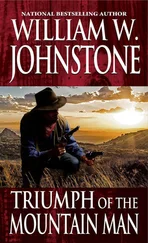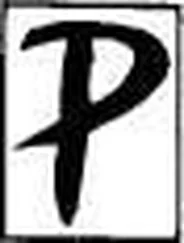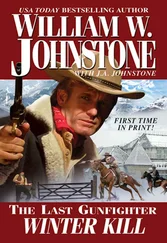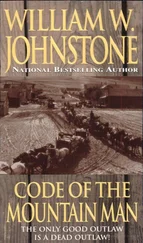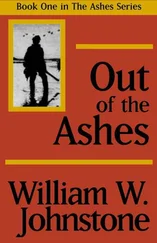William Johnstone - A Good Day to Die
Здесь есть возможность читать онлайн «William Johnstone - A Good Day to Die» весь текст электронной книги совершенно бесплатно (целиком полную версию без сокращений). В некоторых случаях можно слушать аудио, скачать через торрент в формате fb2 и присутствует краткое содержание. Год выпуска: 2012, Издательство: Kensington Publishing Corp., Жанр: Старинная литература, на английском языке. Описание произведения, (предисловие) а так же отзывы посетителей доступны на портале библиотеки ЛибКат.
- Название:A Good Day to Die
- Автор:
- Издательство:Kensington Publishing Corp.
- Жанр:
- Год:2012
- ISBN:нет данных
- Рейтинг книги:4 / 5. Голосов: 1
-
Избранное:Добавить в избранное
- Отзывы:
-
Ваша оценка:
- 80
- 1
- 2
- 3
- 4
- 5
A Good Day to Die: краткое содержание, описание и аннотация
Предлагаем к чтению аннотацию, описание, краткое содержание или предисловие (зависит от того, что написал сам автор книги «A Good Day to Die»). Если вы не нашли необходимую информацию о книге — напишите в комментариях, мы постараемся отыскать её.
A Good Day to Die — читать онлайн бесплатно полную книгу (весь текст) целиком
Ниже представлен текст книги, разбитый по страницам. Система сохранения места последней прочитанной страницы, позволяет с удобством читать онлайн бесплатно книгу «A Good Day to Die», без необходимости каждый раз заново искать на чём Вы остановились. Поставьте закладку, и сможете в любой момент перейти на страницу, на которой закончили чтение.
Интервал:
Закладка:
Dusty did know it. He was a veteran warhorse, survivor of many past battles. Legs bending, the animal knelt down in the bowl and lay on his side, flanks quivering as he panted for breath. It was a trick that had served him well in many a hot firefight. Sam wanted to minimize the chances of Dusty being hit by a stray slug; he set a lot of store by the animal.
Brownie didn’t know the trick and wasn’t minded to follow suit, going by Lydia’s inability to make him obey.
Sam said, “Tie your horse to the tree! Tie him good so he can’t break loose!”
Lydia hesitated.
“Comanches won’t shoot him. They want him alive.”
“But your horse laid down.”
“Dusty’s been in the war and knows what to do. Brownie don’t and this ain’t the time to try and learn him!”
The charging Comanches were several hundred yards away. Every inch of that fast-narrowing gap meant the difference between life and death. Lydia hitched Brownie to the tree and ran over to Sam with her rifle in hand.
“Take cover behind the rocks and keep your head down, girl.”
“The hell you say, Mister Yank. I aim to kill me some of them red devils!”
Sam chuckled, amused despite himself. “I believe you will at that, missy. Keep your nerve and we might just get out of this alive.”
“I reckon I can stand anything an ol’ heathen Northerner can, and more!”
Sam was done talking. He went down on one knee, laying the wooden box flat on the ground. He unfastened twin brass snaps at the join, opening the case.
“What for you fiddling with that?” Lydia asked.
“I’ve got a ... secret weapon, you might say.” Sam lifted the lid of the wooden box, exposing its contents. Within the hollows of a black crushed-velvet encasing lay several pieces of hardware: an elongated rifle barrel, a wooden stock, and a telescopic gunsight.
Crouching behind a chest-high rock, Lydia took up a shooting position, placing the Henry rifle across the boulder’s flat top and snugging the butt of the stock into a hollow of her thin shoulder. “Them Injins is getting awful close,” she said, her thin voice quivering.
“Don’t shoot yet. It’s a waste of ammunition. Wait’ll they get closer,” Sam said.
“Mister, they’re getting too danged close!” Lydia raised her voice to be heard over the drumbeat of galloping hooves, the whoop and shriek of fast-closing raiders.
Her face was stiff, the pupils of her eyes blue-rimmed black dots, large and swimming. She kept glancing from the charging Comanches to Sam, to see what he was doing.
Sam loosed the mule’s-leg from its holster. The hardware in the case was custom-designed for the cut-down Winchester. Practiced hands moving with expert sureness, Sam freed the elongated rifle barrel from its casing. Its butt end was expertly tooled, machined with spiraling grooves that ensured a perfect fit when joined to the muzzle of the Winchester’s sawed-off barrel. Sam screwed the long barrel into place, a final twist bringing its front sight post up with a click to the deadline-center vertical.
Taking the smoothly polished wooden butt stock from its holder, he fitted its forward end over the butt end of the short-handled mule’s-leg. The stock’s open central slot fit snugly over the rear of the weapon.
A pair of screws with flat, thumbnail-shaped ends was set in place in holes drilled in opposite ends at the head of the stock. Strong, dextrous fingers worked them, turning them in place in corresponding holes in the Winchester’s chopped handle.
The mule’s-leg, cut-down for quick access when in the saddle or in the close quarters of a saloon or back alley, was transformed into a long rifle, with the precision and accuracy of the same.
The wood case held a telescopic sight, too, but there was neither time nor need for attaching it; the Comanches were too close.
Sam muttered under his breath. “Their blood is up. They’re hot for the kill, the dirty so and so’s.”
“Hey, mister,” Lydia said, “don’t let them take me alive!”
“Don’t be in such an all-fired hurry to die,” Sam said.
Lydia, desperate, was insistent. “I ain’t no kid. I know what happens to girls they catch! Promise you won’t let that happen to me.”
“It won’t.”
“Swear it!”
“I swear.” Sam shouldered the long rifle. Bringing it into play, he went to work.
Black Robes. That’s what the Comanches called the Catholic priests who had first come with the conquistadors.
In their misguided zeal the priests sought to convert the Indian tribes of the southwest. Comanches were bemused by these strange ones who clothed themselves in long black robes with high, stiff white collars, wearing crosses on chains around their necks. It was clear, though, that they were the Mexicans’ shamans and spiritual leaders, like the medicine men of their own tribes.
The Black Robes had odd ways of doing things, even for whites—queer prohibitions and obligations—all designed to set them apart from more worldly individuals and bring them into contact with the god-devils of the Invisible World. Some had strong medicine indeed, chanting prayers of their faith while undergoing hideous tortures of cutting, burning, mutilation, and other bedevilments devised by Comanches to test the mettle of captive priests. The ironclad conquistadors came and went but the Mexicans and their Black Robes remained.
During the summer of 1865, Red Hand had led his followers on a raid south across the Rio Grande deep into Mexico. One of his trusted henchman, a cruel and wily warrior of proven ability, killed the priest of a pueblo village during a skirmish. The pueblo was a clump of adobe houses inhabited by white-clad peasants with wicker-and-straw sandals. It yielded slim pickings, with few decent horses or weapons to plunder or captives to enslave and torment.
The village had a church, a high-walled structure which the raiders gutted and burned. The Black Robe priest died well, hard but well. Red Hand’s henchman stripped the corpse of its black robe, donning it.
The Comanche wore the clerical garb like a long-sleeved coat or cape, splitting and cutting it to maximize his freedom of movement. The garment gave him power, not the power of a shaman such as Medicine Hat, but still, an aura of otherworldly menace enhancing his death-dealing capabilities in the material world.
It set the henchman apart from his fellows, who in the time-honored way of the tribe began calling him “Black Robe.” His old name, the name by which he had previously been known to one and all, was dropped, forgotten as if it never was. Henceforth he was—Black Robe.
Now, a year later, Black Robe’s priestly vestment was somewhat the worse for wear. Weathered and bloodstained, it was ripe with the smoke of countless campfires, the burning of villages, and the blood of many foes. It was tattered and frayed, with torn seams showing at the shoulders and across the back. It was decorated with strips of buckskin fringe along the arms and brightened with beads and scraps of colored ribbons.
Black Robe’s mission, given him by Red Hand himself, was to lead a band of scouts down on the flatland, making sure that no White Eyes from the plateau escaped the slaughter to warn their fellows in the ranches and town.
Black Robe’s party was one of several advance parties operating deep in enemy territory, land the Comanches regarded as theirs by right. These bands would begin the encirclement and isolation of the town of the Hanging Tree.
The tribesmen well knew the Hanging Tree and hated it. More than a few of their number had been caught in times past by the hated Texans and hung on a rope by the neck from the lightning-blasted tree at the edge of town. It was a bad thing, an evil act, for Comanche tradition decreed that any warrior slain by hanging was unable to enter the Happy Hunting Ground, his spirit condemned to wander the winds forever in bodiless, endless limbo.
Читать дальшеИнтервал:
Закладка:
Похожие книги на «A Good Day to Die»
Представляем Вашему вниманию похожие книги на «A Good Day to Die» списком для выбора. Мы отобрали схожую по названию и смыслу литературу в надежде предоставить читателям больше вариантов отыскать новые, интересные, ещё непрочитанные произведения.
Обсуждение, отзывы о книге «A Good Day to Die» и просто собственные мнения читателей. Оставьте ваши комментарии, напишите, что Вы думаете о произведении, его смысле или главных героях. Укажите что конкретно понравилось, а что нет, и почему Вы так считаете.

